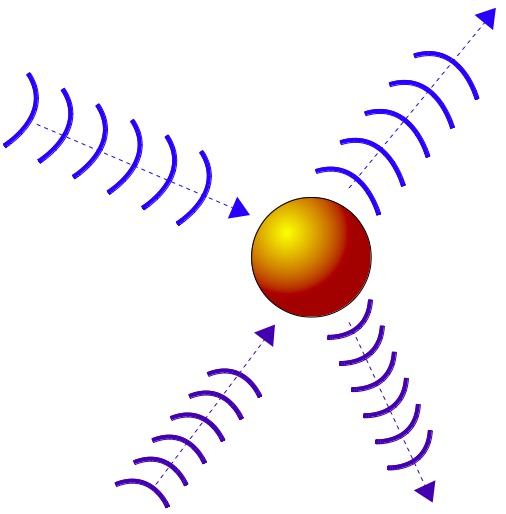Phonon-roton
coupling in liquid helium and in superfluid Fermi
gases
Liquid helium 4 is the first physical system that
has led to the observation of the fascinating macroscopic
quantum phenomenon that is superfluidity. Although its superfluid
phase has been studied extensively for almost a century, it
still exhibits some fundamental phenomena not fully
understood from a quantitative point of view. One of them is the
attenuation of sound waves, which, as is usual in the
presence of short-range interactions, propagate in the fluid
after a density perturbation.
At low temperatures,
superfluid helium 4 has two types of excitations, phonons
and rotons. Phonons are the well-known
quasi-particles composing the sound wave in a quantum
description; they have the usual
low-wavenumber linear dispersion relation. Rotons, on the other
hand, are massive quasi-particles discovered in helium; they are a bit strange because their dispersion
relation has a non-zero minimum (a gap) at a nonzero wave
number. The damping of phonons
(hence of sound) by scattering on rotons was calculated by
Landau and Khalatnikov in 1949 but has never been carefully
checked experimentally;
even
worse, recent measurements [Fåk et al., PRL (2012)] point
towards disagreement.
A theoretical collaboration
between the University of Antwerp and two LKB teams has led
to what should be the definitive expression of
low-temperature phonon-roton coupling, including terms that
have been omitted or even, for one of them, forgotten in the
article of 1949. This new prediction might be confirmed
experimentally by precise measurements in helium 4, a liquid of bosons,
at low temperature. In the same work, the
theory was extended to another system, a gas of fermionic atoms in a flat-bottom trap,
which did not exist in 1949 but which was recently prepared
in the lab by Martin Zwierlein at MIT and Christophe
Salomon's team at LKB. This system is superfluid
at low temperature and also has two types of excitations,
phonons and BCS quasi-particles (broken pairs of fermions),
the latter having a rotonic dispersion relation (with a gap
and anonzero effective mass). The phonon scattering
amplitude on the BCS quasi-particles, however, had never
been calculated before. It's now done.
An experimental
confirmation of the newly predicted couplings would close an
important chapter in the physics of low-temperature
macroscopic quantum systems.
Publication
" Landau Phonon-Roton
Theory Revisited for Superfluid 4He and Fermi gases ",
Yvan Castin, Alice Sinatra, Hadrian Kurkjian, PRL 119 ,
260402 (2017).
Corresponding author
Yvan Castin, yvan.castin@lkb.ens.fr

